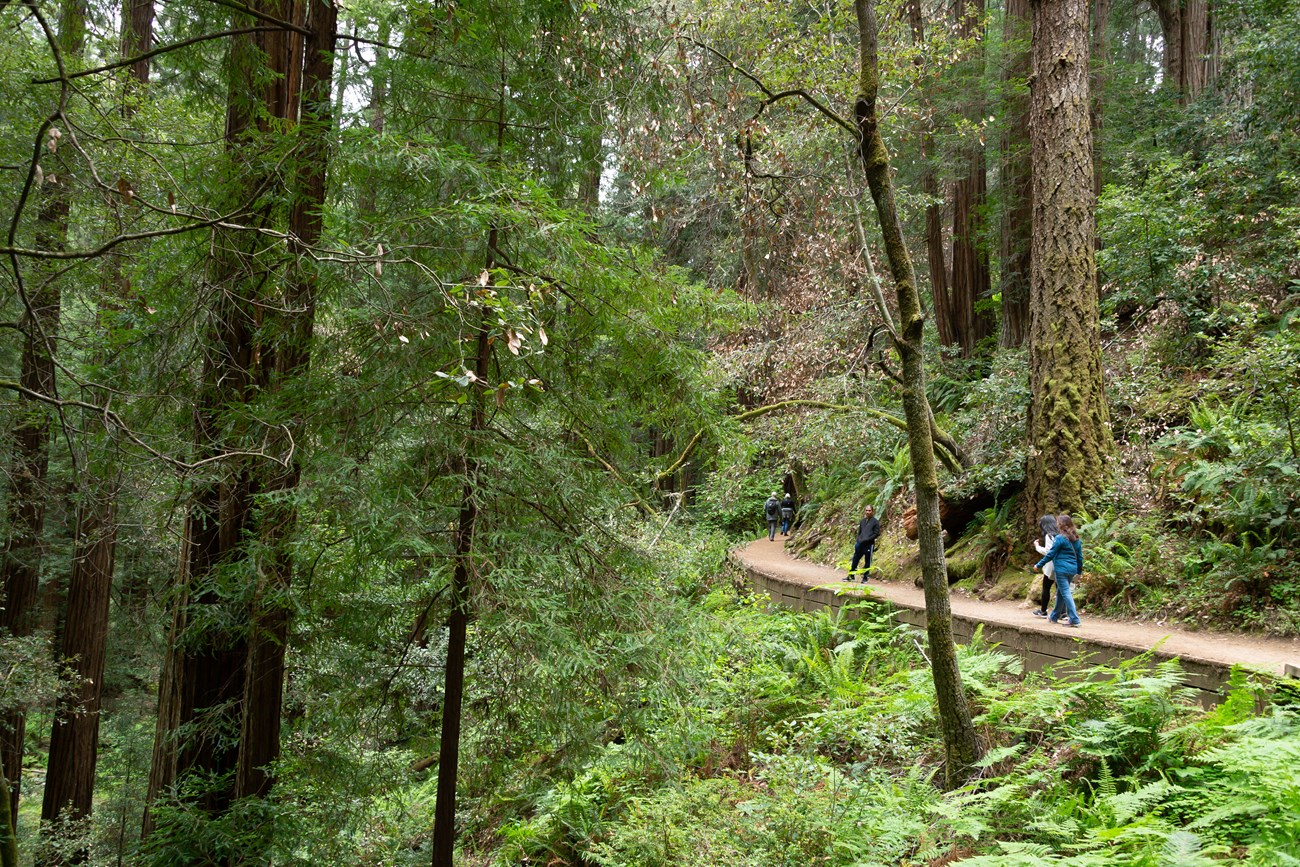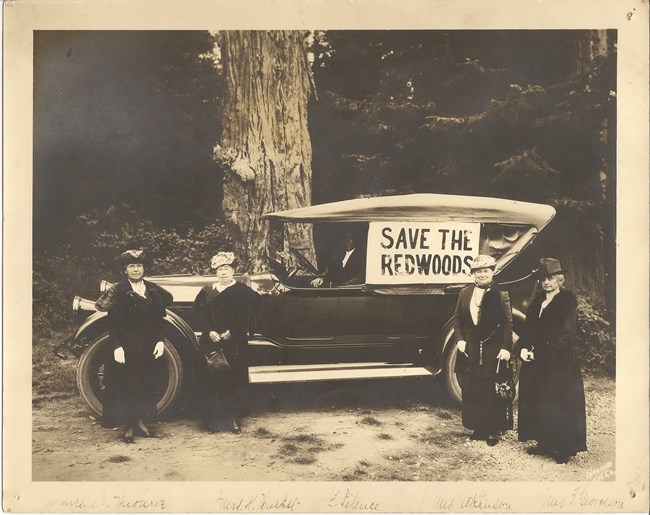Part of a series of articles titled Climate Change at Muir Woods.
Article
A Climate Resilient Future for Muir Woods

Alison Taggart-Barone/ NPS
When visitors come to Muir Woods, they often come to relax, disconnect, and detoxify. The strength and tranquility of this forest has provided millions of people with a source of inspiration.
It also provides an important space to reflect upon the path of development our nation has taken and to look towards the future. Coast Miwok people were the first stewards of the land. They didn’t just live on it, they lived with it. Techniques like cultural burns shaped the beautiful ecosystems known as Muir Woods today. When Coast Miwok were removed from their ancestral homes, they were unable to care for the forests as they had in the past. The idea of manifest destiny fueled westward expansion and rapid development. That development needed lumber. Redwoods were an easy target.
Instead of living with the land, colonizers quickly shifted societal values to taking from the land. When Muir Woods National Monument was established in 1908, over 80% of California’s old growth coast redwoods were alive. By the end of WWII, half had escaped logging. By the end of the 1950s, 10% of old growth was left. Today, 5% of the original range of old growth coast redwood trees remains. Muir Woods provides a time capsule to the past, a fragmented image of what used to be. It can also provide a place to learn from our past extraction of natural resources. We can use the history to help us think critically about how to interact with nature in the future.

Humbolt Historical Society
Logging of old growth redwood forests has virtually stopped. However, we are still impacting forests through our extraction and use of fossil fuels. When we burn fossil fuels, such as coal, oil, or natural gas for our energy needs, we release carbon dioxide into the atmosphere. Carbon dioxide acts like a blanket that traps heat. The more of it we burn, the thicker that blanket gets, which disturbs the climate. These changes impact places all around the world, including Muir Woods and your community.
The towering trees of Muir Woods are a reminder that people can live with the land. Today, Indigenous tribes around the country and the world are working with land agencies like the National Park Service. Studies have shown Indigenous-managed land has more biodiversity than non-Indigenous managed land. Indigenous knowledge helps create a more resilient world. This will help buffer the current and future impacts of climate change.
Saving Muir Woods wasn’t a simple feat- it took a movement. Coast Miwok people stewarded the land for thousands of years, cultivating the beautiful forest we know today. Against threat of logging, people who didn’t have the right to vote worked with politicians. Industrial advances provided alternatives to lumber: concrete and steel. Change often takes a village, and the fight against climate change is no different.
The mission of the National Park Service is to protect places like Muir Woods for future generations. Muir Woods is doing our part. We get 100% of our energy through renewable energy like solar, and wind. Community Choice Energy like MCE Clean Energy ensures that everyone can easily join the movement to protect the places we love.
People sometimes focus on individual actions to stop climate change. Using less electricity or water is helpful. But those actions won’t accomplish the amount of change we need to protect places like this for the future. A movement saved Muir Woods from logging, and a movement will need to save Muir Woods once again. When we work together with our communities, we can and will make a difference. Look at the many ways the park is working to protect these places, and see which of them you can bring to your own community. How can you use the story of Muir Woods to inspire change in your daily life?
For more information
University of British Columbia. "Biodiversity highest on Indigenous-managed lands." ScienceDaily. ScienceDaily, 31 July 2019.
Mention of trade names or commercial products does not constitute endorsement or recommendation for use by the U.S. Government
Last updated: February 1, 2022
